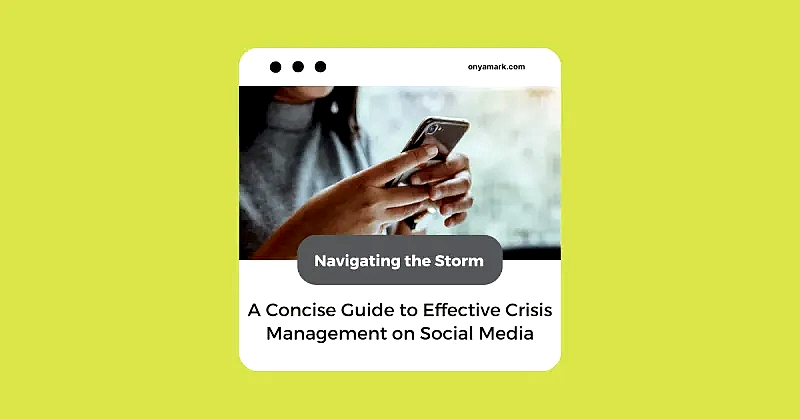We all like to go about our day believing the best for our businesses and organizations – hoping and praying all the right marketing efforts will pay off with more clients, more engagement, more inquiries, etc.
But what about when the worst happens? When situations unfold completely outside of marketing strategy? When natural disaster strikes, when people go rogue, when someone dies…..the list can go on. What happens then? What do you do?
In many of these cases, you’ll sometimes see social media pages go quiet. How on earth do you begin to respond to those scenarios? Circumstances you DIDN’T plan for? The ones you didn’t slide into your planned programming?
In this blog post, we will explore the best practices for handling crisis management on your social media accounts and why it matters to your readers.
#1 Prepared Planning
Organizations of all shapes and sizes should always come with a crisis management plan in place. While it may not be able to capture all life scenarios, it should outline realistic situations, who is responding, how to respond, and how to best communicate.
A study by Deloitte found that organizations with crisis management plans and simulations in place respond 30% faster to crises. Regularly conduct crisis simulation exercises to ensure the social media team is well-prepared and can react promptly in a crisis.
#2 Swift Response Time
While many would not expect your social media team to sit at attention 24/7 (and in many cases, resources don’t allow for this), there should be an expectation of quick responses should something occur.
According to a study by Sprout Social, 79% of consumers expect a response on social media within the first 24 hours, and 30% expect a response within one hour.
Let’s say a warehouse fire happens that offsets shipping times and impacts current workers. It is likely not wise to wait a full week to respond online. Be prompt, be direct, and don’t keep people waiting.
#3 Transparency & Honesty
Usually when something happens, the more forthcoming, the better. Organizations should openly acknowledge the issue, take responsibility when appropriate, and provide regular updates to rebuild trust.
A survey by Edelman revealed that 81% of consumers believe that companies should be transparent about how they operate and communicate.
When organizations sweep things under the rug or ignore the issue entirely, it tells consumers that their concerns do not matter and that there is something to hide.
Use this opportunity also also reach out and ask people how they are. See if they’ll respond and provide you with real-time feedback. Or look to provide discounts or help where possible so folks see you engaging and caring about their well-being.
#4 Consistent Messaging Across Platforms
When different messages are sent across different platforms, it can confuse readers as to what may be happening.
Salesforce found that 76% of consumers expect a consistent experience when interacting with a brand across different channels (no matter the situation).
As an organization trying to guide the message, ensure that crisis communication is consistent across all social media platforms to avoid confusion and maintain a unified brand image.
#5 Empathy & Emotional Intelligence
Even if the crisis or issue didn’t directly impact you personally, it did impact someone. This is why empathy is so important to convey when messaging on social media. This is showing that they understand the impact of the crisis on their audience.
PwC showed that 59% of consumers believe businesses have a responsibility to demonstrate empathy.
Navigating a crisis on social media requires a strategic and data-driven approach. By embracing transparency, maintaining consistency, and demonstrating empathy, organizations can weather the storm and also emerge stronger.
Remember, a well-managed crisis can allow brands to showcase their commitment to their audience and build lasting trust. If this is something that your organization needs assistance in managing, Onya would be glad to talk!








